Do you love side dishes more than the entree? People love sides because they get to experience many different tastes and textures on one plate. The problem is that many unhealthy side dishes aren’t much better than reaching into your pantry for a bag full of processed junk food. Many of them are high in calories and fat, low in protein and fiber, and loaded with so much sugar your heart might stop beating just thinking about it.
Some of your favorite side dishes could ruin the nutritional value of your whole meal. Don’t make the mistake of trusting smaller portions to keep you safe. Here are some of the most unhealthy sides you can find — and the alternatives you can use to replace them.
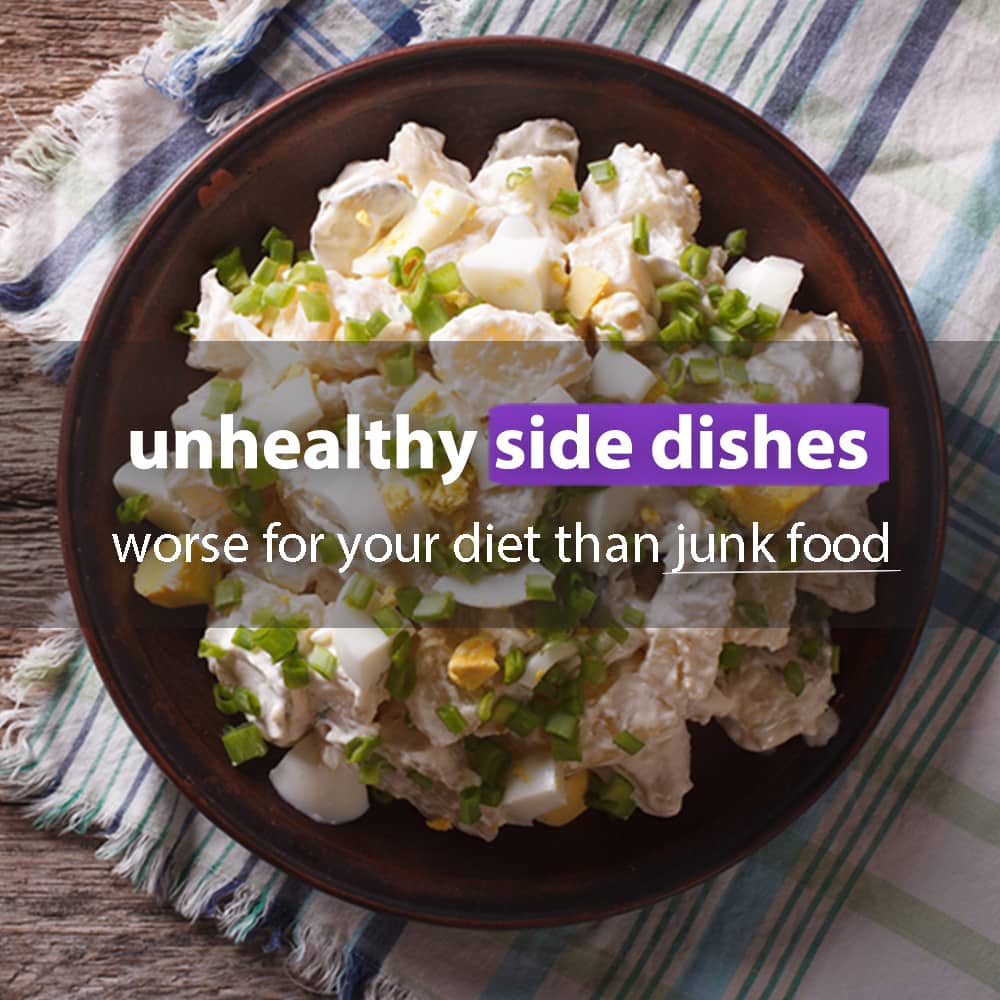
1. White rice
White rice is a popular side and base choice for many different meals. It lets you add any flavors or ingredients you want to create a spicy or savory side dish you’ll love no matter what.
The problem is, white rice is what’s called a refined grain. You’ve probably heard of whole grains, and how important they are as part of a healthy diet. Unlike whole grains, refined grains — such as white rice — are missing some of their most nutritious components. White rice isn’t as bad for you as potato chips are, but it’s what you’re not getting — and could be — that makes it an unhealthy choice.
You have a few options when it comes to choosing a side dish that’s healthier than white rice. Brown rice is a better source of protein, carbs, energy, and fiber — it will keep you fuller for longer, so you are less tempted to eat junk food. Spelt is a also an option. It’s a rice alternative that, when prepared just right, can feel and taste very similar.
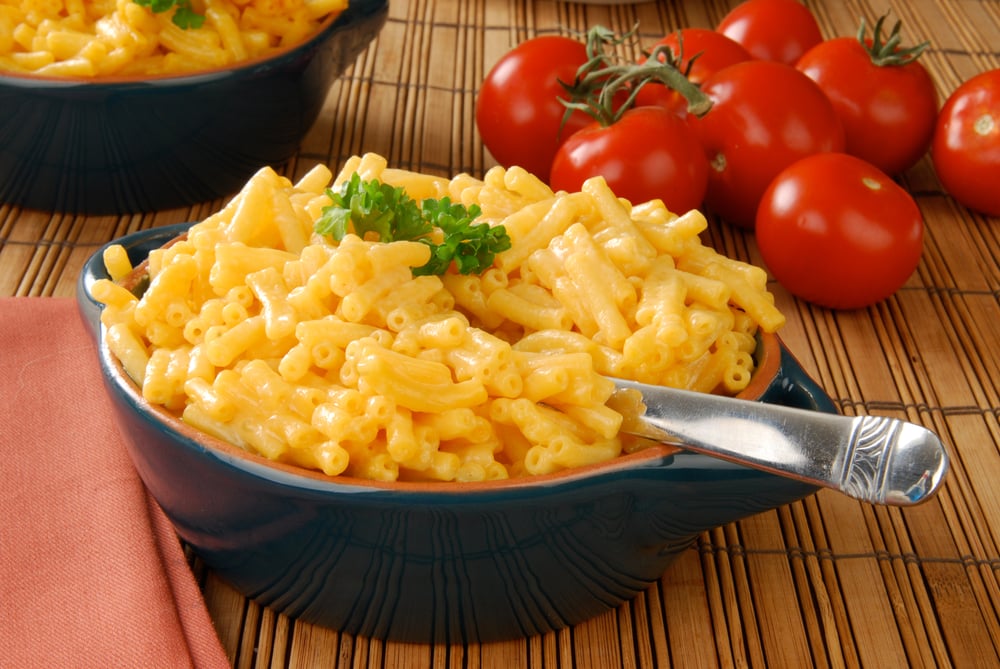
2. Macaroni and cheese
Yes, it’s everyone’s favorite food from childhood. Whether it’s nostalgia or just an irresistible craving for carbs that drives you to choose mac and cheese as your side dish, it’s not the greatest choice. You know this. You just might not know why — or what to eat that’s almost as good.
The severity of unhealthy side dishes like these really depends on where it comes from. Are you making it from scratch, or pouring it out of a box? “Just add water” is one of the most cringeworthy taglines in the pasta world (right behind “made with cheese product”). At least when you make it at home, you’re eliminating a lot of the fat in salt, and the other chemicals in whatever that cheese powder is made of. But even then, you could still make your pasta side a much healthier one.
Though it’s not nearly as enjoyable, whole grain macaroni noodles with olive oil and herbs will still satisfy your taste buds — and fill your tummy. The pasta will provide the fiber. The olive oil will supply the fat. And you can count on the herbs to flavor your side dish without sending your blood sugar — and your blood pressure — crashing through the ceiling.
3. Sweet potato casserole
When you think of casseroles, you either picture holiday feasts or funerals. Either way, a casserole is not a good entree or side dish to slap onto your plate, whether you’re celebrating or mourning. Most casseroles require plenty of butter, cream, sugar, and a very large pan. That’s all code for “not really all that good for you,” by the way, and as much as you might love sweet potatoes, this dish has got to go.
You wouldn’t dump table sugar onto your sweet potato, would you? That’s basically what you’re doing when you mix vanilla extract and butter into your mashed sweet potatoes. Then you top it with brown sugar — and sometimes, even marshmallows. This shouldn’t count as a side dish, whether it’s Thanksgiving or not. It’s a dessert … but one you can improve. Sort of.
Did you know you can make your own (healthy) version of sweet potato fries? Simply cut the potato into fry-like slices, very lightly salt and drizzle with olive oil, and bake. They’re not the crispy fries you secretly dream of when you’re hungry, and it’s not the sweet and gooey casserole you’ve grown to love. But it’s something you can enjoy — no brown sugar or marshmallows required.
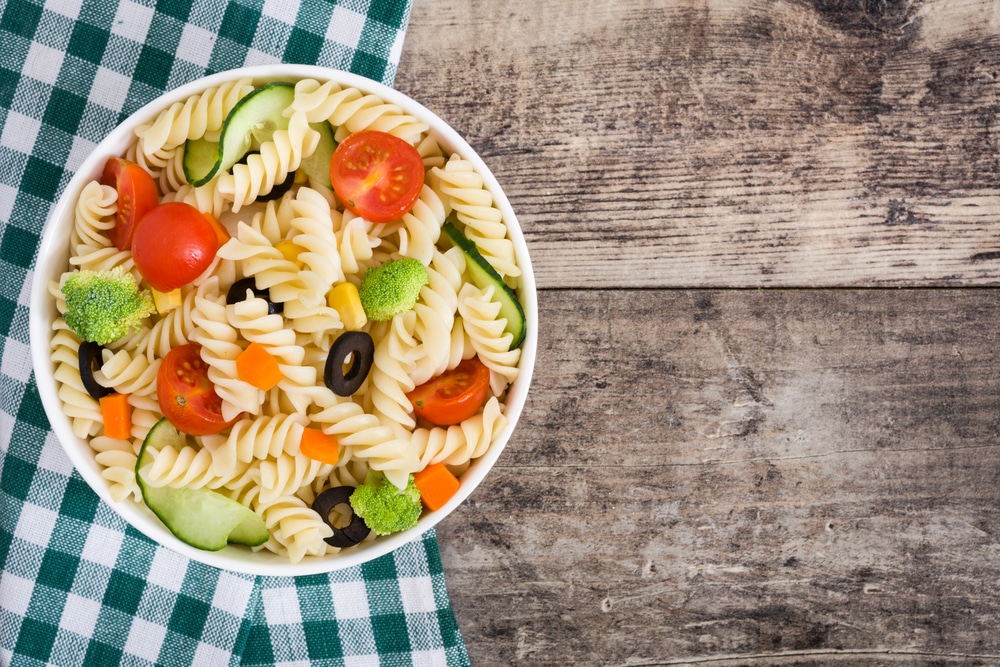
4. Pasta salad
Many pasta salad recipes call for olives, mozzarella, peppers, and tomatoes — all extremely healthy ingredients. These ingredients aren’t where this side dish loses its credibility, though. One of the most important steps in a classic pasta salad recipe is to drench everything in Italian dressing. While this might make your mouth water, it’s probably not worth it. This dressing is high in calories — and since this is just a side dish, you’re spending a lot of your energy on an ingredient that isn’t going to do you much good.
If you haven’t picked up on this already, you’re going to find that olive oil is one of your greatest allies along your quest to eat healthier. It’s still oil, so you don’t necessarily want to drench everything in it before putting it in your mouth. You can significantly cut back on the amount of calories and fat in your pasta salad recipe simply by using olive oil instead of Italian dressing. It has almost the same exact effect — and it’s much better for your health.
5. Vegetable fritters
Let’s talk about something we haven’t addressed on this list yet: frying. As you likely already know, frying is the process of heating and cooking food using oil. Most oils used for frying, like vegetable and coconut oils, are high in saturated fat. This is why so many experts warn against diets high in fried food. Too much saturated fat can put a lot of pressure on your heart. And if you don’t eat enough healthy foods to compensate for so much fat, you could develop heart disease, and related issues.
Frying vegetables, as you do when you make apple or zucchini fritters, doesn’t necessarily take away the health benefits of the food itself. But you’re smothering it in fat — and as good as it tastes, the long-term consequences probably aren’t worth the crunch.
If you want your vegetables to crunch, consider baking them into vegetable “chips” instead. Baking, which doesn’t require any oil, can give your fruits and veggies a more crispy texture without completely ruining your diet.
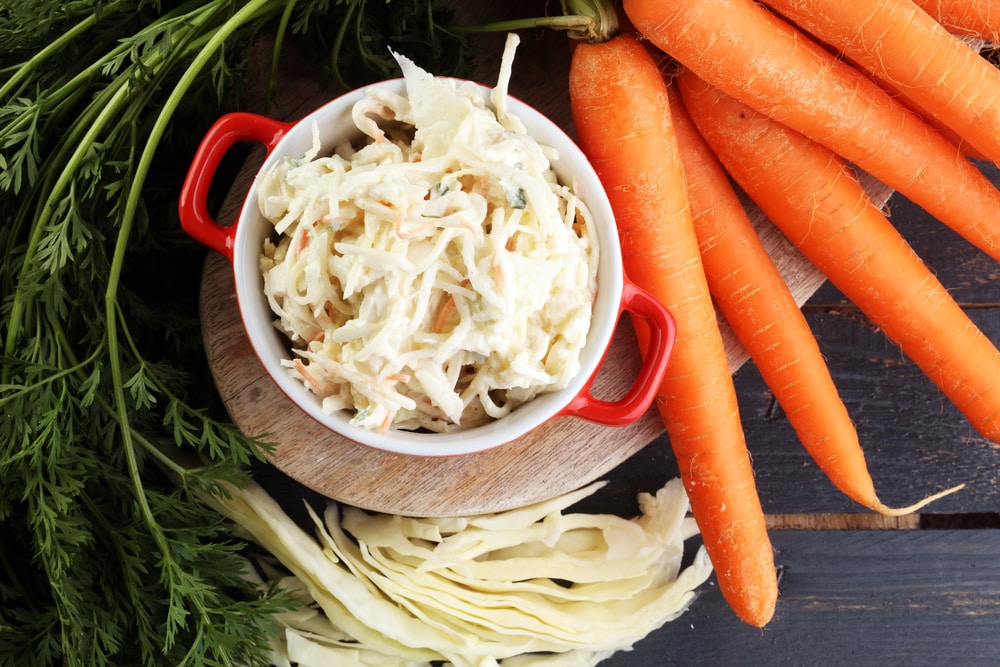
6. Coleslaw
Here’s a quick rundown of how you make coleslaw. Start with cabbage, carrots, and onions — all healthy vegetables that actually have some health benefits between them. Then add sour cream, mayonnaise, salt, sugar, and vinegar — and stir! Sour cream and mayo are so common in so many recipes, especially the go-to picnic-friendly side dishes. All that fat doesn’t do your heart much good, and it’s so easy to make slaw without all that excess … well, everything.
A coleslaw made with olive oil, lemon juice, and honey won’t have quite the same taste or texture as traditional slaw with enough mayo to last you a lifetime. However, this alternative at least lets you enjoy a tasty side without risking your long-term health.
7. Mashed potatoes
When it comes to mashed potatoes, the creamer, the better. “Creamy” usually isn’t a good sign when it comes to food, though. Creamy implies fat has been added to something to give it a smoother, richer texture. That’s accurately the case with mashed potatoes. Butter is a regular on most homemade mashed potato recipes. But believe it or not, you could do without it. Really.
Try mashed potatoes without butter or cream. They won’t be as creamy, but they’ll be healthier. Mashed sweet potatoes could be an even healthier alternative, if you like the texture and taste. They have more vitamins in them than white potatoes, and don’t usually require as many toppings to achieve the taste you’re hoping for.
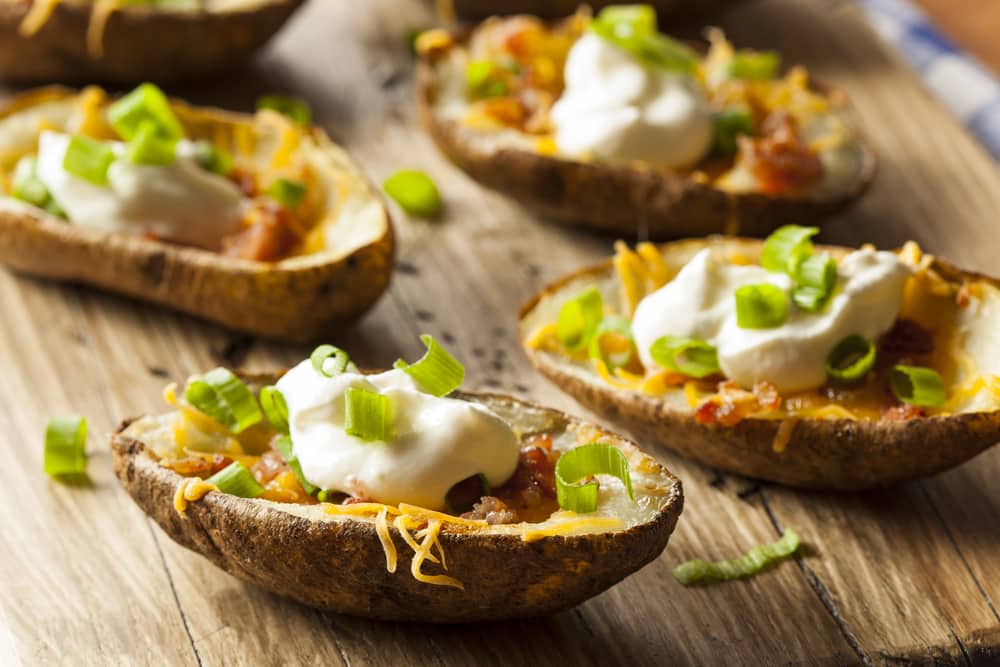
8. Loaded baked potato
A plain potato just isn’t exciting enough, is it? So many of us like to add our own spin on a classic. This wouldn’t be a problem if we tended to reach for healthy ingredients to load on top of our potatoes. The reality is quite the opposite, though. Loaded baked potatoes are usually covered in processed meat, cheese, and cream. You might think you need that, but you don’t.
The biggest offenders in this epitome of unhealthy side dishes are the bacon and the sour cream. It doesn’t get much better if you pour on the cheese though, either. A few peppers or a sprinkle of onion won’t hurt much, but it won’t help, either. This dish is especially ineffective if you’re one of those people who scoops out the “good stuff” and leaves the skin behind. Always eat the skin — it’s where most of the nutrition is hiding!
In general, stay away from anything “loaded.” Usually, loaded foods aren’t loaded with the healthiest ingredients. A plain baked potato is a slight improvement. If you do choose a baked potato, make sure there are other sides as well — a small side salad, or a few vegetables to balance out your starchy spud.
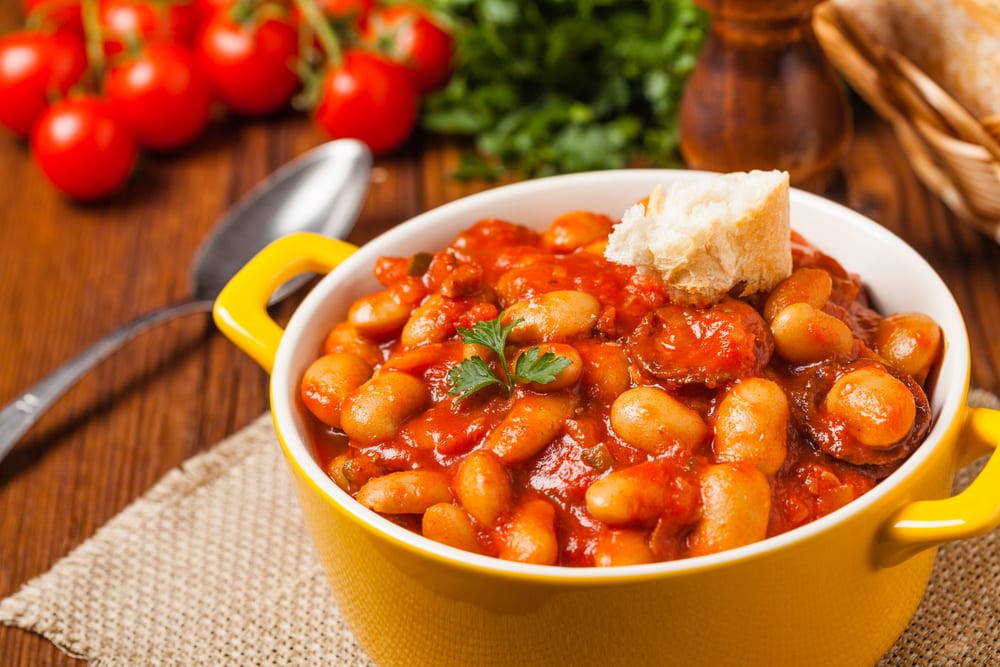
9. Baked beans
Baked beans are a staple at most cookouts, and for good reason: they taste amazing. And when you break this side dish down to its base ingredients, it doesn’t start out all that bad. Beans are high in protein and fiber, and they’re loaded with vitamins and minerals that keep your body’s systems running at optimal capacity. It’s what you typically add to the beans that’s the problem — especially if you buy them pre-made in a can and simply heat them up on the stove.
Depending on the recipe, a batch of baked beans might call for anything from molasses to sugar and salt to tomato paste — possibly even bacon. As you can probably guess, the sugar and sodium in this mixture can skyrocket your daily total — and it’s only your side dish!
To enjoy your beans without the repercussions, choose a baked bean recipe that eliminates as many of these unwanted ingredients as possible. Most importantly, always start with fresh, dry beans. Leave the canned, soaking-in-a-salt-bath beans on the grocery store shelf. Dry beans do take much longer to prepare — you have to let them soak overnight for the recipe to work. But not only are they better for you — you’ll probably love the taste, too.
10. Green bean casserole
Whether it’s Thanksgiving or you’re just feeling like having a good vegetable casserole, you’re basically just taking a healthy choice — green beans — and mixing them into a solution that’s so much fattier and saltier than any one person needs in a single meal.
Green bean casserole recipes vary. But many of them call for chicken broth or cream of mushroom soup — that’s where the added saltiness comes in. Adding milk or cream, butter, and cheese does add plenty of flavor, but it also adds a lot of saturated fat. There are healthier ways to make it, sure — but there’s also a much healthier alternative.
Instead of smothering your green beans in butter, cheese, and cream, roast them and lightly drizzle olive oil and pepper on top. You can even crumble a little turkey bacon on top (but just a little!) for added texture and taste. Everyone loves a good, thick casserole. But you have the fresh vegetables right in front of you. Don’t cancel out their epic health benefits.
Make smart choices — it pays off
Side dishes fill your plate with extra goodness. You don’t have to say no to them for good. Just choose your sides wisely. Experiment with creative ways to swap unhealthy ingredients for much healthier ones. Once you try the healthier versions of some of your favorite foods, you might even realize you like the new version better than the old.
Learning how to make smart food choices takes time. It’s not always en easy adjustment. That’s why the experts are going to continue telling you that positive change takes time. No one’s saying you can never eat mac and cheese again. Just … try not to choose it every time the opportunity arises.



